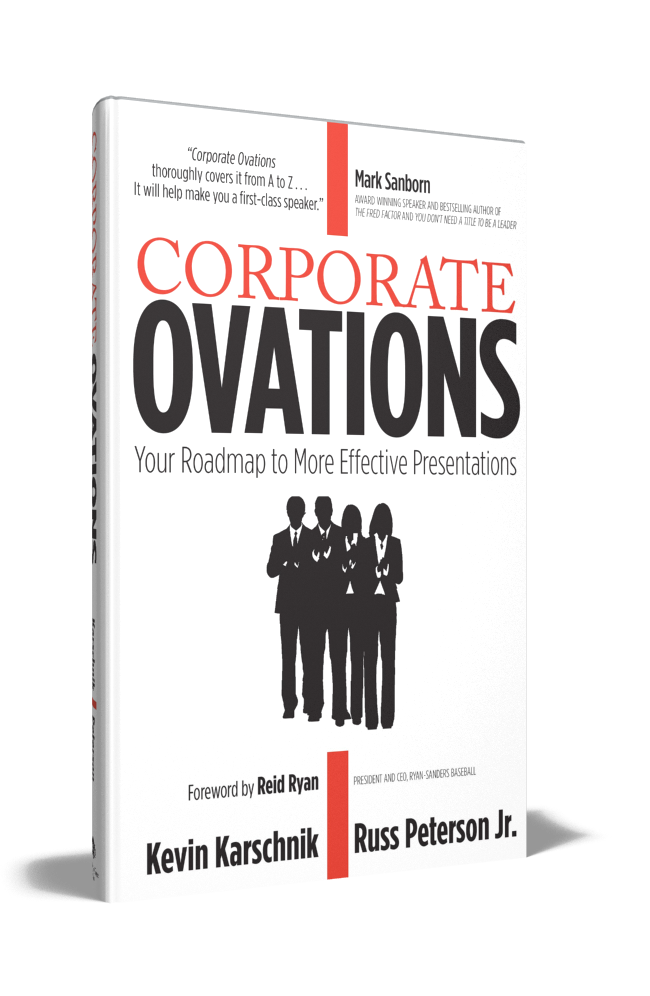The audience was loud and boisterous as they funneled out of the convention center. Their final speaker for the day left them all inspired and chattering about possibilities. “We could start by talking to our customers and ask them!” Then someone else responded, “I think we should figure out how we could scale this beyond North America!” They were all working on building a new future.

This moment of inspiration and collaboration was created by an average speaker using a powerful tool. She didn’t deliver her story with the sights and sounds of an entertainer, nor did she use eloquent words like Hemingway. Instead, she used an often overlooked, but powerful tool for creating inspired audiences.
This tool is part of the Corporate Storytelling arsenal and it can be used by anyone. It involves three main elements: The Setup, The Failure, The Possibility.
The Setup
This first phase introduces the audience to a success from the past. While I wasn’t there when Steve Jobs asked the engineers at Apple to start working on the iPod, we can use the technology as an example since I’m sure you’re all familiar with the iPod. I can picture his setup going something like this…
The problem for music lovers has always been twofold, portability and choice. We all want to take our music selections with us. Portability was first solved with the 8-track tape in cars and the cassette tape in a walkman. But the choice was limited with either program buttons or a linear rewind to get to the song you wanted. The CD was invented and solved both issues. Now you had portability and direct access to the exact song you wanted.
The Failure
At this point in the story, the audience is tracking with the speaker. They’re actually waiting for the fork in the road. There’s been nothing but a description of a landscape so far. This feels like a simple history lesson. What’s the issue here? In the example we’re using with the iPod, the audience of Apple engineers is waiting for the problem. If we have portability and direct access… then what’s the big deal?
This is when the speaker drops the problem on the audience. It’s a moment when the audience will choose to either get on board or discount the issue completely. Back to our fictitious Steve Jobs springboard message, it may have gone something like this…
But now there’s a new problem… the music lover wants more. One minute I’m in the mood for Van Halen, but the next I want to hear Neil Diamond or Katy Perry. I never know what music my mood will request so now my challenge is the quantity of CDs I need to carry. The solution can’t be more suitcases for holding 100 CDs. Why can’t this quantity issue be solved with technology?
Boom. The failure (problem or opportunity) has been identified. Now the audience is thinking something like “It shouldn’t be that way.” or “We could fix that.” or “Why haven’t we already started working on this already?”
The Possibility
Without overdramatizing the delivery, I’d recommend the speaker gives the audience a healthy pause right here. Now there’s only one step left for the speaker. Give the audience the prompt they need to get started on the issue.
The verbal prompt will tap into the audience’s imagination. This is the fertile playground in the brain for taking action. All humans love games and puzzles. We like to work on creating something. This third step doesn’t need to be lengthy or dramatic. It’s just the prompt to get started. Back to Steve Jobs…
Isn’t that what we do? We improve life with technology. We can solve this. Just imagine a day when a jogger can carry over 10,000 songs in her hand while running and still be able to call up the exact song she wants to close out the race strong. I can’t wait to meet you there on that day.
While some may feel the speaker should provide the answer, the vision, the ending to the story… that won’t always be the most effective with the audience if the goal is to move them into action. When the speaker leaves the possibility hanging in the air without a solid path to get there, the audience will take ownership and begin to build that bridge.
And when the audience builds the bridge to that possible future, they are much more likely to buy into the overall strategy and vision. They are co-creating the strategic plan as they leave.
Steve Jobs was known by many as a great presenter, speaker and storyteller. While my Steve Jobs iPod example above is purely fictional, I certainly hope it does his memory justice. We all know a great storyteller in our life. Let’s all learn from them and inspire the world to imagine a better future.
As we wrap up this blog post, I just have one question for you…
What kind of future could you help create by inspiring your team with story?
See you next week,
Russ
Let’s connect…
iSpeak teaches workshops on Professional Selling to help sales leaders gather the most important data and then use that information to create the right message. Are your sales presentations closing eyelids or deals?
Russ Peterson Jr. is the co-founder and Managing Director of iSpeak, Inc. – An award-winning professional development training company. Russ is a speaker, international trainer, and published author on Professional Sales Communication and Business Communication. He delivers workshops, keynotes, and personal communication coaching services to business professionals in the US and around the world. His leadership blog assists leaders in giving voice to their vision. You can connect with Russ directly through Twitter, Facebook and LinkedIn.



Please note: I reserve the right to delete comments that are offensive or off-topic.